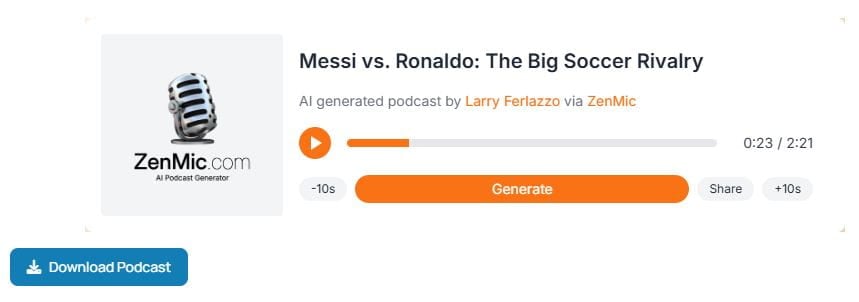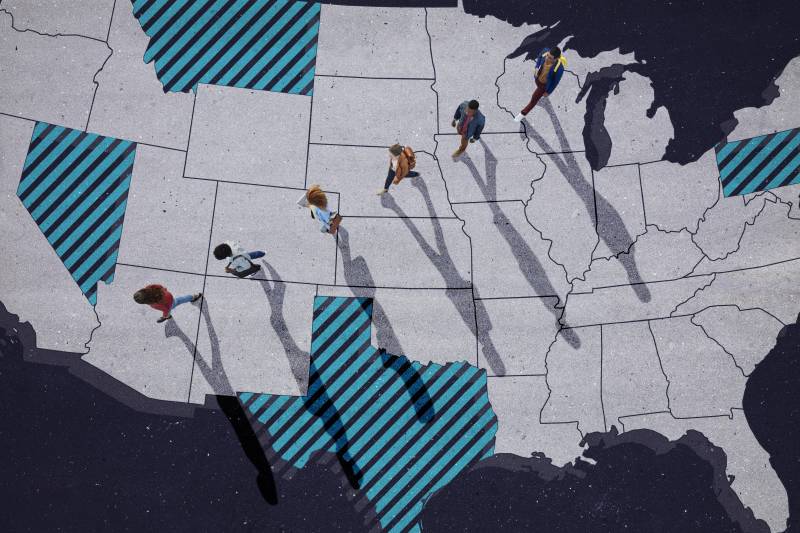When my son started the fourth grade, his teacher provided a thick bound packet of cursive writing worksheets. She said that completing the packet was optional, but only if completed would her students earn their “pen license” and move from years of pencil use to the holy grail, ink. Using AI should also be earned; earned after becoming AI literate. Banning AI use in college classrooms is a pointless and exhausting endeavor. Instead, we should learn alongside our students to become AI literate. Our society is fully emerged in the AI era with nearly half of US states releasing AI guidance, the state of California signing legislature to include AI literacy in K12 curriculum, and recent guidance from the US Dept of Education on AI implementation in postsecondary education. It is imperative that all of us, students and faculty alike in higher ed institutions, learn AI basics and earn the right to use generative AI responsibly.
So, what does it mean to be AI literate? The answer to this question is changing daily and yet, there are many resources to help our students and us build awareness, knowledge, and skill in AI use. There are online short courses that share many of the same AI literacy basics, including:
- Building awareness of how AI is already being used in various fields from healthcare to retail to education and more
- Understanding AI vocabulary and acronyms, such as machine learning, deep learning, large language models (LLMs), neural networks, and natural language processing (NLP)
- Critique skills to uncover hallucinations, falsehoods, and biases in the output,
- Acknowledging privacy, safety, and environmental concerns
- Skill in prompt engineering, and 6. knowledge and practice in AI uses in specific contexts
Together, with our students, we can turn to many free online options. Below is a short list I’ve discovered for myself and have provided to my students:
- Generative AI for Educators: A 2-hour online course from Google to learn generative AI to assist your teaching practice.
- Elements of AI: An online course by MinnaLearn and the University of Helsinki to learn the capabilities of AI through theory and practical exercises.
- AI Foundations for Educators – Common Sense Education: A short course by Common Sense Education covers foundational AI and its ethical considerations in education.
- AI 101 for Teachers: A series of videos, with companion guides, on AI foundations for educators from collaborative partners – Code.org, Educational Testing Service (ETS), International Society for Technology in Education (ISTE), and Khan Academy.
- Introduction to AI for Teachers and Students: Five videos from Wharton School that provide an overview and a practical approach to AI large language models for educators.
- Empower Educators to Explore the Potential of Artificial Intelligence: This one-hour Microsoft module, broken into 9 units, includes concepts, techniques, tools, and practical applications for AI in education.
- 2024 AI Literacy Canvas Module ( Request Form): This AI literacy Canvas module with a Creative Commons CC BY-NC-SA license designed by the Center for Teaching Excellence and Innovation (CTEI at Rush University, covers four areas of AI literacy: recognition, comprehension, critical thinking, and proficiency.
Ultimately, learning AI basics does go beyond short online courses and requires iterative practice using a variety of AI tools. Once we all know the basics, we can use established frameworks to help guide more informed discussions establishing dos and don’ts for responsible AI use in our courses. And yes, some, maybe even many, will abuse the privilege of AI use in your class, and you’ll find a big splatter of blue cross-outs or black ink smudges, but it’s still better than banning pens completely. Let’s provide avenues to improve our awareness, knowledge, and skills in AI use as we all collectively figure out how to manage in a future world where AI will be embedded in our work.
Madeline Craig is an associate professor and technology integration coordinator at Molloy University in Rockville Centre, NY. In improving her own AI knowledge and skill, she relies on her professional learning networks on LinkedIn, Bluesky, and ISTE CONNECT while at the same time playing with a wide variety of AI tools.
References
Klein, A. (2024, September 11). ‘A Solid Start’: States are crafting AI guidance for schools, but have more to do. Education Week. https://www.edweek.org/technology/a-solid-start-states-are-crafting-ai-guidance-for-schools-but-have-more-to-do/2024/09
Lambert, D. (2024, October 4). California students to learn about AI and media literacy soon. EdSource. https://edsource.org/updates/california-students-to-learn-about-ai-and-media-literacy-soon?utm_source=ai-admin.beehiiv.com&utm_medium=newsletter&utm_campaign=the-ace-ai-literacy-framework&_bhlid=ffb2ed35f7f7c84088bcb6b4caa5765a8f6854e1
Miao,F. & Cukurova, M. (2024). AI competency framework for teachers. UNESCO. https://doi.org/10.54675/ZJTE2084
U.S. Department of Education, Office of Educational Technology. (2024). Navigating Artificial Intelligence in Postsecondary Education: Building Capacity for the Road Ahead, Washington, DC.
The post Earning Our AI Literacy License appeared first on Faculty Focus | Higher Ed Teaching & Learning.
When my son started the fourth grade, his teacher provided a thick bound packet of cursive writing worksheets. She said that completing the packet was optional, but only if completed would her students earn their “pen license” and move from years of pencil use to the holy grail, ink. Using AI should also be earned;
The post Earning Our AI Literacy License appeared first on Faculty Focus | Higher Ed Teaching & Learning. Teaching with Technology, AI technology, artificial intelligence, digital literacy, teaching with technology Faculty Focus | Higher Ed Teaching & Learning









